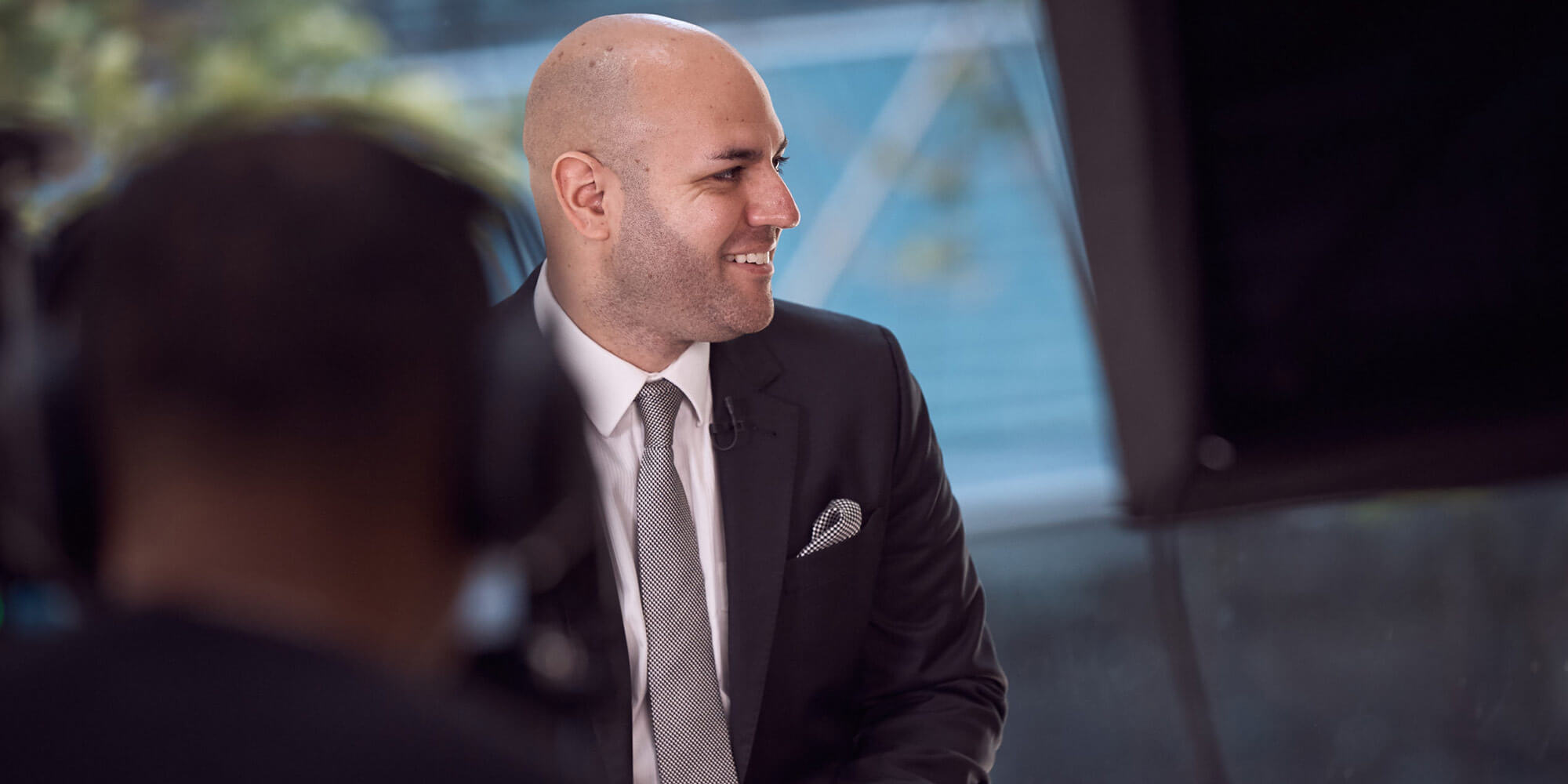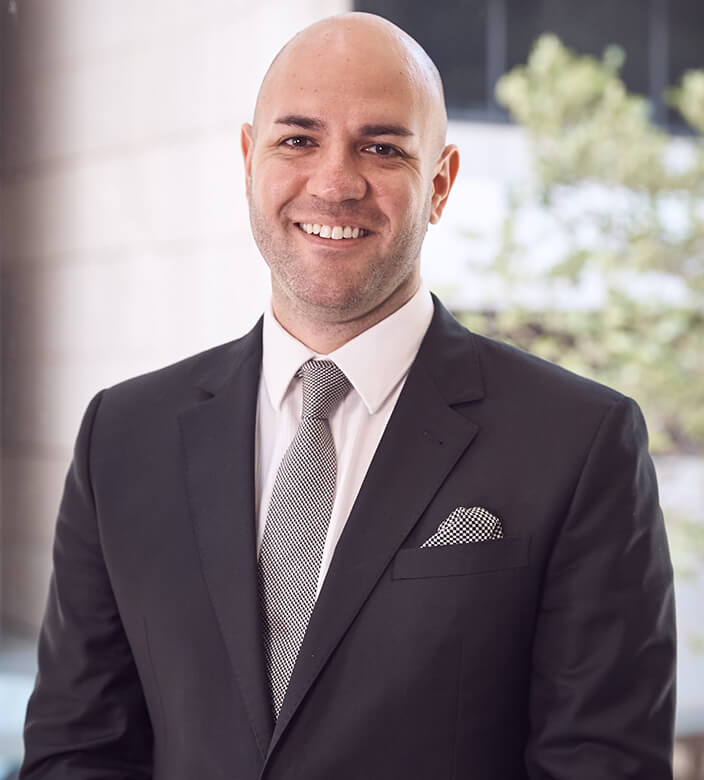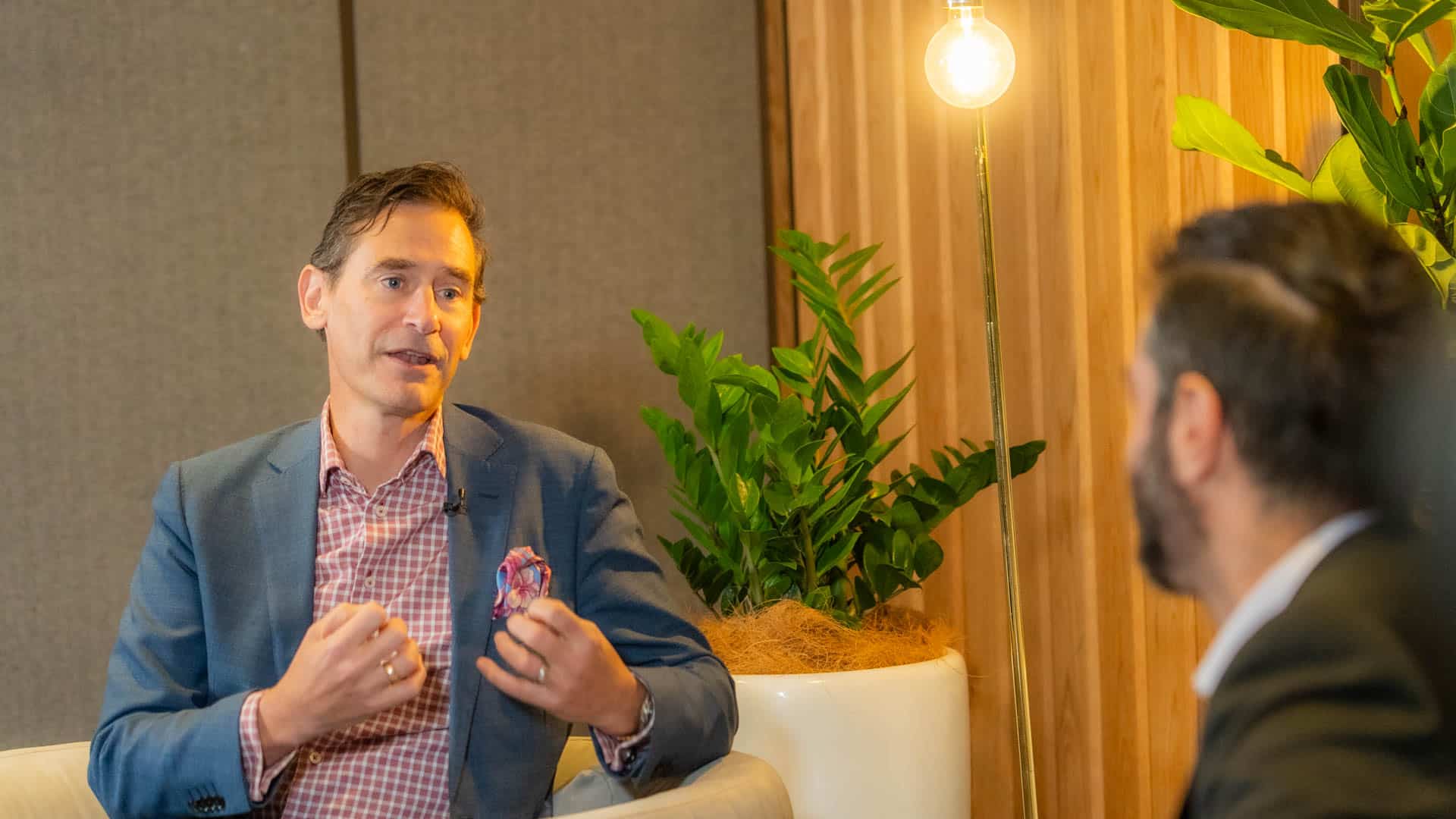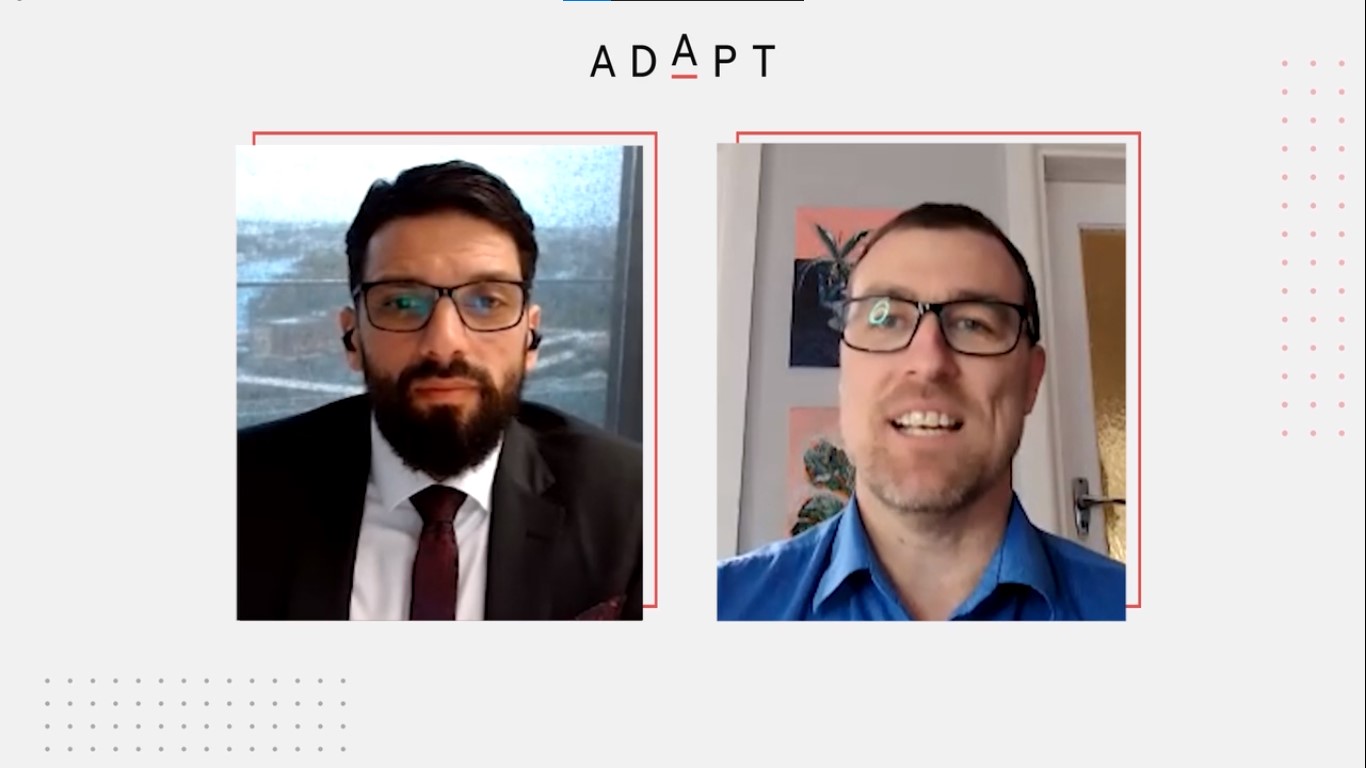Timothy Larcos leads Digital and Technology Operations for PwC Australia nationally. Tim’s PwC technology team of 230 staff work around Australia and APAC to deliver a full scope of the IT function. At ADAPT’s Digital Edge event interviewed by ADAPT’s Senior Research Strategist Aparna Sundararajan, he discussed the biggest barriers to digital transformation and how to deploy change in large organisations.
Aparna Sundararajan:
Welcome Tim, so at ADAPT we have found out from various Edge events that some of the biggest barriers to digital transformation are people-driven change. What are your views on that? What are you seeing as the biggest barriers to digital transformation today?
Timothy Larcos:
For us at PwC, there would be probably four buckets of barriers that we have seen as an organisation. The first being the pace of change, so how quickly we can move as an organisation, how quickly our clients can move through that change. The other is the time investment exercise.
That’s a big barrier for us as well, right, is it takes time to get through change and it takes time for an organisation to go through that transformation and so time plays a really key role in terms of finding people’s time, getting them enabled to actually do that stuff.
The other barrier is probably around the technologies that you have in place.
How do you get to a point where you’ve converted all those legacy technologies and made them better, to enable the organisation for adoption?
They must all act in combination with your ability to commit time, your ability to move rapidly, your ability to update the legacy technologies; are all really important parts of enabling you to get to where you’re trying to go.
And one of the most important pieces that brings that all together in the fourth bucket is really the outcomes, so you can update all of the legacy technologies, you can make sure that you’re moving at the right pace, you can allocate all the right times, but you’ve really got to be minded that it’s an outcome-driven exercise.
One of the big barriers is making sure that you’re clear with the business around what those outcomes are going to be.
Aparna Sundararajan:
In your experience, have you come across any of those as barriers specifically as digital skills?
Timothy Larcos:
Digital skills for us is something that is really a mindset change, I wouldn’t look at it like a technology programme that we have to undertake and we get people.
It’s really about bringing the whole organisation on board.”
That’s everyone from you know Human Resources, Human Capital, People, Finance, everyone needs to be undertaking a mindset change in the way that they look at that change within the organisation. When we look at upskilling as a whole, and we look at how we have to upskill our people, we really try to look at it from a multitude of lenses; so what is the impact on us, for our people, what is the impact on our clients, what is the impact on society, and how do we bring all of those elements together to make sure that we’re driving the right outcomes?
Aparna Sundararajan:
OK, so then how are you dealing with it within PwC?

Timothy Larcos:
In terms of driving the overall adoption of the programme, there is a multitude of ways that we’re trying to do that. Really we want to try and democratise technology as much as possible.
In this year specifically if we look at FY20 as an organisation, we’ve got a number of programmes that we’re undertaking as an organisation to help drive that change.
First and foremost, one of the key exercises that we undertake is digital academies and digital academies are about bringing people on short, really focussed information on getting them upskilled and getting them on target for something really really quickly.”
We have digital accelerator programmes and digital accelerator programmes are more about taking someone out of the business for a longer period of time and actually upskilling them.
That could be introducing them to PA technologies, that could be introducing them into automated scripting, it could be upskilling them on programming, bringing them along that journey.
We also introduced the concept of digital fitness.
Digital fitness is a really interesting concept because if you look at individuals within the organisation they have different levels of maturity.”
For PwC when we looked at our staff and we looked at a way of trying to identify a means to bring those people up; what we really quickly identified is we needed to set a baseline for everyone in the organisation.
This was so that we knew how many, where people needed to grow, and where they didn’t need to grow, and areas of focus, and so digital fitness is about making sure that we had a 15 minute quick survey where we could understand where people are sitting and then tailor content to meet their needs as they grow.
Aparna Sundararajan:
What have been the key learnings so far in terms of the project adoption?
Timothy Larcos:
It’s been interesting for us as an organisation to make assumptions and coming into it as a firm of over 8,000 people nationally, we had some preconceptions that perhaps different cohorts of individuals within the group would have more challenges around adopting and in fact that’s actually been the opposite.
When we looked at the digital fitness outcomes and we looked at some of the cohorts we thought were going to be challenging upskilling exercises, in many instances they were actually larger schools, and they actually adopted the technology more rapidly than other cohorts.
Not making assumptions is really an important part of one of the learnings that we’ve had.”
The other learning I would say is our ability to deal with the rapid change of technology, has probably been quite hard as well.
It seems like every single day there is a new piece of technology coming out and so trying to make sure that we’re keeping that content relevant and that we’re keeping it at the forefront of people’s minds constantly, has been another key learning.
What you can’t do is set it and forget it and expect that people are going to go.”
It’s that constant engagement. The final learning for us would really be around making sure that we’ve got the right level of adoption across the practice.
It’s not just about making sure that one particular pocket has upskilling, it’s really the whole firm.”
That’s part of really why we’re doing it as a firm, as opposed to individual pockets of individuals.

Aparna Sundararajan:
PwC being such a large organisation, how do you really go about deploying such a big project and change?
Timothy Larcos:
It’s an interesting challenge because we are such a large firm and we are such a diverse firm. We have a whole swathe of advisory practises and we do a whole bunch of different things and so for that very reason, it does need to be a very multi-pronged approach.
We do need to take a very tailored, customised lens to each of the businesses.”
There is no one-size-fits-all way to address the problem. Because of that, what you end up with is very specific learning subsets for individual groups to help bring them on that journey.
The other thing in terms of the delivery piece is not losing sight of the outcome focus. There are definitely going to be short to medium-term goals but there are also long-term goals that you’re trying to achieve.
For us in the short to medium-term, it’s about making sure that our staff are better equipped to deal with the change in technology and better educate them around the broad range of things that are going on in the digital space today.”
Longer-term though, really, we want that to be part of the way that people live and breathe digital in their lives and so in order to do that we need to keep that constant engagement throughout the journey and we need to make sure that it carries through in everything that they do. And so for us, outcome and delivery is about short/medium-term wins but also not losing sight of the long term focus.
Aparna Sundararajan:
Is anything else you would like to add or advise based on your own personal experience for organisations?
Timothy Larcos:
Digital upskilling is an important part of any organisation in 2019 and beyond, right? We’re almost at the end of 2019 now.
Digital is only going to keep going. It’s going to be something that is going to be part of our lives every single day.”
The more that you intertwine that change in mindset and the more that you help people baseline what good looks like, and help them strive to that, is going to be an important part of driving success in the organisation.



























